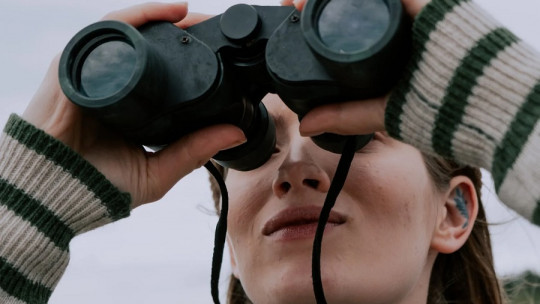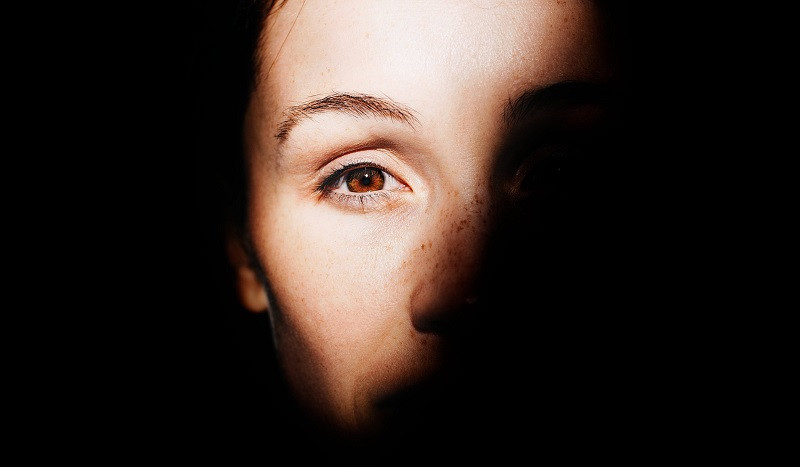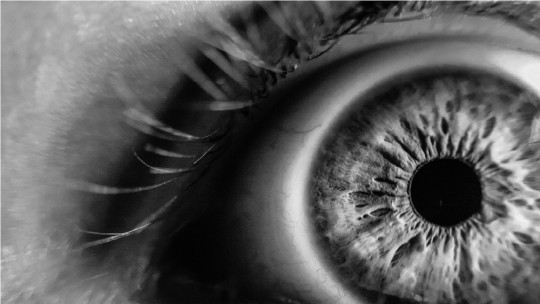
We are walking down the street and we find a corpse. What do we do? Apart from the obvious, which is to be scared when we see it and call the police, we may do one of the following two things: cover our eyes, trying not to see it anymore, or get closer and see it in great detail.
No, being curious about a corpse is not exactly something very normal but it is not a symptom of psychopathy or anything like that. Human beings are curious by nature and there are many people who are very interested in things that are grotesque, murky and macabre.
Morbid curiosity is that feeling of not wanting to look at something that seems horrifying to us but, still, not being able to avoid continuing to look at it It is a strange, ironic sensation that manifests itself in different degrees depending on the person. Today we are going to see what are the key aspects behind that peculiar sensation.
What is morbid curiosity?
Have you heard of Ricardo López? Of the many people who respond to this name, the most infamous is undoubtedly the Uruguayan-American who in 1996 wanted to go down in history by trying to end the life of his greatest idol, the Icelandic singer Björk.
López is not only known for having attempted to commit such a homicide, but for how he recorded his descent into madness through 18 hours of recording recorded with his camera, a gift he gave to himself on his 21st birthday.
These recordings are video diaries in which he exposes his thoughts, his love-hate for Björk and, also, his complexes due to the overweight he suffered due to his Klinefelter syndrome. In most of the recordings, Ricardo López appears half-naked, with an evident level of neglect in a floor that with each recording was more full of dirt. There are also these video diaries where he records how he manufactured the sulfuric acid bomb that he would send to his idol. His last recording, titled “The Last Day-Ricardo López” by himself, ends with him opening his mouth and shooting himself.
These macabre recordings, evidence of the mental problems of a fan who tried to change the life of the Icelandic singer by taking her away, are difficult to view Not because they cannot be found on the Internet, in fact, all of López’s videos are on YouTube. What makes them difficult to watch is that it takes a lot of stomach to see how Ricardo López shows us how his life and his mind become increasingly murky, grotesque and disturbing.
But the truth is that the YouTube channel is full of videos about the case, and even has a channel specialized in it where everything is exposed, including the lifeless body of the 21-year-old. There is a video documentary of almost 2 hours with more than 200,000 views, made with López’s most important videos.
And let’s not talk about the enormous number of YouTubers specialized in serial killers and notorious homicides who talk about the case. If there are so many videos, it is because there is demand for the topic. People are interested in a topic that arouses a lot of morbid curiosity.
We have all felt this emotion on more than one occasion. Morbid curiosity is that feeling of not wanting to look, but still not being able to stop doing it We are seeing something that seems threatening and disgusting, that our nature tells us that it is wrong to focus so much on it, that it is even dangerous, but we still continue.
We feel a macabre attraction towards something horrifying, the same attraction felt by those interested in the case of Ricardo López and Björk.

The psychological elements of morbid curiosity
This emotion has been known for a long time. Plato himself recorded this 2000 years ago when he told the story of a man named Leontius. One day, Leontius was walking near the walls of his city when he glimpsed a pile of corpses with his executioner next to him.
Leoncio He felt the fervent desire to look at those lifeless bodies, but at the same time he felt the genuine sensation that it was wrong to look at them But his desire conquered his aversion and Leoncio could not help approaching the corpses, exclaiming:
“Over there! Miserables! Contemplate your plenitude before the beautiful spectacle!”
Even from a modern perspective, Leoncio’s actions do not surprise us. After all, if the same thing happened to us, it is quite likely that we would not be able to avoid looking at them, even just a little.
Naturally, there are people who surely could not direct their gaze at all, while others would not take it away because, like every human trait, morbid curiosity also presents individual differences.
What makes some people more likely to look at horrifying things than others? This was the question asked by researcher Coltan Scrivner, who has carried out several investigations to determine what are the key aspects behind why a person manifests a higher degree of morbid curiosity than others. Based on his research, Scrivner tells us about three main key aspects:
1. Rebellious nonconformity
According to Scrivner’s research, socially rebellious people score high on something called rebellious nonconformity—i.e. the tendency not to obey social norms Social rebels care little for the traditional lifestyle and prefer some unpredictability in their lives.
Many people, when they are told that something is prohibited or poorly done, feel a special attraction to do it, something that would be the case of those who have a high level of rebellious nonconformity. Most things that spark morbid curiosity are often discouraged and penalized by cultural norms.
In Western environments, such as Europe and North America, it is considered a violation of social norms to show interest or curiosity about topics such as serial killers, violence, rape or paranormal activities, even though we can find them in the media. Communication. Showing interest in all of this in a Western country is a strong predictor of morbid curiosity.
Naturally, this depends on each cultural context, since In a culture where these issues are not such a taboo topic, social rebels will be less likely to show morbid curiosity toward those same issues
2. Disgust that reminds us of our animal origins
Another of the key aspects that Scrivner mentions when talking about morbid curiosity is what he calls “animal reminder disgust”, which can be translated into something like the disgust that reminds us of our animal origins. This is a dimension of generic disgust that is activated when seeing corpses and things that remind us of death
It is believed that this type of disgust appears to protect us from what could be dangerous to our health, such as a contaminated body fluid or what has killed the corpse we are seeing.
In his research, Scrivner found that People with high morbid curiosity tend to feel less disgust towards those things that remind us of our animal origins That is, morbidly curious people are less likely to express fear in various aspects of life that are related to death and feel less upset in situations in which bodily integrity may be compromised.
3. Manifest social curiosity
Building on the work of Todd Kashdan, whose research shows that generic curiosity can be categorized into five dimensions, this researcher and his colleagues have identified social curiosity as a key aspect behind curiosity.
Social curiosity can be divided into two types: overt and covert While overt or overt social curiosity refers to an interest in the behavior of others, non-overt social curiosity is associated with interest in gossip and gossip.
Coltan Scrivner relates this to one of the dimensions he has identified in his work on morbid curiosity: that of interest in the minds of dangerous people. The main aspect of this dimension would be to show curiosity towards the motives and behaviors of dangerous people that have pushed them to commit a vile and bloody act. According to him, people who score high on overt social curiosity are more likely to manifest morbid curiosity.
The morbid curiosity test
In conclusion, with his work Scrivner maintains that, Although the three key aspects that we have explained do not explain all the variance in human morbid curiosity, they do significantly influence its appearance and degree with which it manifests itself.
Based on their work and in summary, people who do not pay too much attention to social norms, who do not fear death, who are not upset when they see a damaged or dead body and who, in addition, are curious about the criminal behavior of certain people, they have every chance of having a high level of morbid curiosity.
You may also be a very morbidly curious person… Who knows? Surely you already have your suspicions about whether you are or not based on how curious you were when you saw a dead animal or if you like documentaries about shady things but, equally, if you want to check it, Coltan Scrivner himself has devised a test to evaluate the morbid curiosity available on their website.








